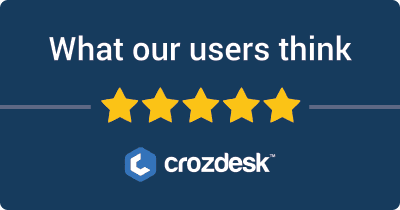
Introduction: Comparing Google Analytics and Microsoft Power BI in Analytics Tools
In the realm of analytics tools, Google Analytics and Microsoft Power BI stand out as two of the most widely used platforms.
Main Purposes:
- Google Analytics is primarily designed for web analytics, helping users track and analyze website traffic and user behavior. It excels in providing insights into website performance, user demographics, and conversion rates.
- Microsoft Power BI, on the other hand, is a business intelligence tool that focuses on data visualization and reporting. It integrates with a variety of data sources and transforms raw data into interactive dashboards, enabling comprehensive business insights.
Why Users Consider These Tools: Both tools are favored for their robust features and ability to facilitate data-driven decision-making. Users appreciate Google Analytics for its depth in web performance tracking, while Power BI is valued for its versatility in handling diverse data and creating automated reports.
Comparison Aspects:
- Features: Google Analytics offers extensive metrics related to web traffic, while Power BI provides a broader scope for data analysis across various domains.
- Pricing: Google Analytics has free and premium versions, but Power BI operates on a subscription model with different tiers based on features.
- Ease of Use: Google Analytics can be more user-friendly for marketers, while Power BI may require a steeper learning curve for users unfamiliar with data analysis.
This comparison will explore these aspects in detail, aiding users in their decision-making process when selecting the most suitable analytics tool for their needs.
Google Analytics VS Microsoft Power BI: Which tool is the most popular?
| Tool | Number of Reviews | Average Rating | Positive Reviews | Neutral Reviews | Negative Reviews |
|---|---|---|---|---|---|
| Microsoft Power BI | 10 | 4.3 | 9 | 1 | 0 |
| Google Analytics | 9 | 3.44 | 6 | 0 | 3 |
Microsoft Power BI is the most popular tool, receiving the highest number of reviews (10) and an average rating of 4.3, indicating strong user satisfaction. Conversely, Google Analytics is the least popular, with 9 reviews and a lower average rating of 3.44, reflecting mixed user sentiments.


Google Analytics and Microsoft Power BI: Quick Comparison Overview
| Feature/Aspect | Ahrefs | SEMrush |
|---|---|---|
| Primary Features | – Site Explorer – Keyword Explorer – Backlink Checker – Content Explorer – Rank Tracker |
– Keyword Research – Site Audit – Position Tracking – Content Analyzer – Marketing Insights |
| Target Audience | – SEO professionals – Digital marketers – Agencies focusing on content marketing and backlink analysis |
– Digital marketers – SEO experts – Content marketers – Social media marketers and PPC specialists |
| Main Advantages | – Robust backlink analysis – Comprehensive keyword data – Intuitive user interface – Constantly updated index |
– All-in-one digital marketing tool – Extensive competitor analysis – Wide array of tools for SEO and PPC – Integrated social media management |
| Core Value Proposition | Focused on providing in-depth SEO insights, particularly strengths in backlink profiles and organic keyword rankings. Ideal for users prioritizing content strategy and link-building efforts. | Offers a holistic view of digital marketing, making it easier to manage all aspects of online presence through an extensive range of tools for SEO, PPC, and social media marketing. |
| Ideal Use Cases | – Conducting comprehensive link audits – Developing effective content strategies – Tracking backlinks and organic rankings – Keyword planning for SEO campaigns |
– Managing and optimizing PPC campaigns – Conducting competitive analysis for market positioning – Comprehensive content analytics and SEO tracking – Social media metrics and management |
Most liked vs most disliked features of Google Analytics and Microsoft Power BI
| Tool | Most Liked Features | Most Disliked Features |
|---|---|---|
| Google Analytics | – Robust tracking capabilities for deep insights on user interactions. – Customizable reports tailored to specific business needs. – Real-time data visualization for immediate decision-making. – User-friendly interface with strong integration with other Google products. – Valuable for online businesses in strategizing and improving operations. |
– Limitations of page tagging can cause inaccuracies in traffic measurement. – Steep learning curve for interpreting statistics. – May require additional services for accurate measurements. – Discrepancies in tracking accuracy due to blocking techniques or caching. – Advanced features can overwhelm less tech-savvy users. |
| Microsoft Power BI | – Ability to import data from multiple sources (e.g., Oracle, MySQL, Azure, Excel) and clean it effectively. – Intuitive interface for easy creation of customized dashboards. – Strong data visualization capabilities with various report formats. – Natural language querying simplifies data analysis. – Automated data processing and scheduled report refreshes keep reports current. |
– Complex advanced features like DAX and Power Query can be challenging to learn. – Pricing and licensing concerns may pose challenges for small businesses or individuals. – Dependence on a stable internet connection for certain features. – Performance issues with large datasets. – Limited customizability compared to competitors. |
Key Features of Google Analytics vs Microsoft Power BI
Here’s a comparison of the key features of Google Analytics and Microsoft Power BI, along with the benefits they provide to users and any unique aspects of each:
Key Features of Google Analytics
-
Real-Time Data Monitoring:
- Benefit: Users can observe current user activity on their website, understand how visitors are interacting with their content in real time, and make immediate adjustments if necessary.
- Unique Aspect: Its comprehensive dashboard that shows active users, page views, and user behavior in real-time.
-
Audience Insights:
- Benefit: Detailed demographic, geographic, and behavioral data helps businesses tailor marketing strategies and content to their target audience.
- Unique Aspect: Google Analytics leverages data from across Google services, providing richer insights into user behavior.
-
Goal Tracking and Conversions:
- Benefit: Users can set and track specific goals (like completing a purchase or filling out a contact form) to measure the effectiveness of their marketing campaigns.
- Unique Aspect: The ability to create custom goals that align closely with business objectives.
-
Custom Reports and Dashboards:
- Benefit: Users can create reports that focus specifically on metrics that matter to their business, improving clarity and focus.
- Unique Aspect: Google Analytics offers a highly customizable reporting environment, allowing users to drag and drop metrics and dimensions.
-
E-commerce Tracking:
- Benefit: Provides insights into the performance of online sales, helping businesses understand sales trends and user interactions that lead to purchases.
- Unique Aspect: Deep integration with Google Ads, facilitating better ad targeting based on user behavior leading to sales.
Key Features of Microsoft Power BI
-
Data Visualization:
- Benefit: Users can create rich and interactive visuals from their data, making complex information easier to understand and analyze.
- Unique Aspect: Power BI offers an extensive library of customizable visualizations, allowing for creative and informative presentations of data.
-
Data Connectivity:
- Benefit: Connects to a wide variety of data sources including Excel, SQL Server, and cloud services, enabling users to consolidate and analyze data from multiple platforms.
- Unique Aspect: The ability to pull data from numerous sources seamlessly, providing a unified view of business metrics.
-
Natural Language Querying:
- Benefit: Users can type questions in plain language and receive insights without needing to know how to code or create complex queries.
- Unique Aspect: This feature makes analytics more accessible to non-technical users, fostering data-driven decision-making across the organization.
-
Collaboration Tools:
- Benefit: Users can create dashboards and reports that can be easily shared with team members, promoting collaboration on data insights.
- Unique Aspect: Deep integration with Microsoft products like Teams and SharePoint enhances collaborative capabilities.
-
AI and Machine Learning Integration:
- Benefit: Utilizes advanced analytics and predictive modeling to identify trends and patterns, aiding users in making proactive business decisions.
- Unique Aspect: The Power BI AI features enable users to leverage machine learning without extensive technical knowledge, making predictive analytics accessible.
Summary
Both Google Analytics and Microsoft Power BI serve distinct purposes within analytics. Google Analytics focuses primarily on website performance and user interaction, making it an excellent tool for digital marketing analysis and user behavior monitoring. In contrast, Microsoft Power BI offers broader business intelligence capabilities, focusing on data visualization, integration, and collaboration, which can cater to an organization’s overall data analysis needs.
Choosing between the two depends largely on the specific requirements of the user. For web analytics and user-centric insights, Google Analytics excels. For deeper data analysis and business intelligence across multiple data sources, Microsoft Power BI stands out as a robust option.
Google Analytics vs Microsoft Power BI Pricing Comparison
| Feature/Factor | Google Analytics | Microsoft Power BI |
|---|---|---|
| Free Tier | Google Analytics offers a free tier for basic insights and analytics. | Power BI has a free version offering limited features for individual use. |
| Monthly Subscription (Paid) | Google Analytics 360: $150,000/year (approximately $12,500/month) | Power BI Pro: $9.99/user/month |
| Annual Subscription (Paid) | Google Analytics 360: $150,000/year | Power BI Pro Annual: $119.88/user/year (equates to $9.99/month) |
| Features of Free Tier | Core website and app analytics, data visualization, and reporting capabilities. | Basic dashboards, limited data connectivity, and sharing features. |
| Power BI Premium | Not applicable | $20/user/month (Premium Per User) or $4,995/month for Premium capacity. |
| Features of Power BI Premium | Not applicable | Advanced analytics, larger datasets, and dedicated cloud capacity. |
| Support | Standard support; Enterprise users have access to enhanced support options for Analytics 360. | Basic support; higher support plans available for Power BI Premium. |
| Discounts/Trials | No free trial for Analytics 360, but a free version available. | Free trial available for Power BI Pro for 60 days. |
| User Licensing | Pricing based on total users, tailored for large enterprises. | Power BI Pro requires individual user licenses, while Premium can leverage larger organizational tiers. |
| Use Case Focus | Website/app analytics, user behavior tracking. | Business intelligence, data visualization, report generation, and sharing. |
| Integration | Integrates with other Google services and third-party tools. | Integrates seamlessly with Microsoft products (Azure, Office 365, etc.) and various SQL databases. |
This detailed pricing comparison highlights both Google Analytics and Microsoft Power BI, showcasing their offerings, subscription models, and key features across different tiers.
Support Options Comparison: Google Analytics vs Microsoft Power BI
| Support Option | Google Analytics | Microsoft Power BI |
|---|---|---|
| Live Chat | Not available | Available during business hours |
| Phone Support | Not available | Available, but limited to certain licenses |
| Documentation | Extensive online help center with articles, guides, and FAQs | Comprehensive documentation, including tutorials and troubleshooting guides |
| Webinars | Occasional webinars and training sessions available | Regularly scheduled webinars and training resources |
| Tutorials | Video tutorials and learning resources provided | Detailed tutorials available through Microsoft Learn and external sources |
Unique Features of Google Analytics Vs Microsoft Power BI
| Feature | Google Analytics | Microsoft Power BI | Added Value and Deciding Factors |
|---|---|---|---|
| Real-Time Data Analysis | Provides real-time tracking of user interactions on websites and apps. | Allows for real-time monitoring of data visualizations through dashboards. | Enables businesses to make immediate decisions based on user behavior and trends. |
| User Behavior Flow | Visualizes the path users take through a site, showing drop-off points. | Employs different types of data slicing and dicing tools to explore user behavior. | Helps understand customer journeys, optimizing site navigation to improve conversions. |
| Enhanced E-commerce Tracking | Tracks specific e-commerce metrics like product performance and sales funnels. | Integrates with various sources for comprehensive e-commerce analytics. | Offers marketers insights on purchasing patterns, enhancing marketing strategies. |
| Audience Segmentation | Provides detailed segmentation capabilities to analyze specific user groups. | Supports custom segments based on any data field in the connected datasets. | Facilitates targeted marketing efforts by understanding distinct user preferences. |
| Integration with Advertising | Seamlessly integrates with Google’s suite of advertising tools for insights. | Allows for the integration of various CRM, ERP, and cloud services to visualize data. | Helps advertisers assess campaign effectiveness and optimize spend in real-time. |
| Custom Alerts | Users can set alerts on specific metrics and receive notifications. | Offers alert functionalities based on data changes and thresholds. | Ensures stakeholders stay informed about significant metric changes that impact performance. |
| Data Studio Integration | Combines Google Data Studio for advanced reporting capabilities. | Connects with Azure and other Microsoft services for deeper insights. | Enhances visualization options leading to better representation of complex data. |
| Attribution Modeling | Offers built-in attribution models to analyze marketing efforts. | Custom model creation allows nuanced attribution analysis across datasets. | Provides clarity on which marketing efforts drive conversions, improving ROI. |
| Predictive Analytics | Utilizes machine learning to forecast future user behaviors based on data trends. | Uses advanced analytics features to project future trends based on historical data. | Guides long-term strategy and helps identify potential growth areas for the business. |
| Automated Reporting | Automates the generation and distribution of customized reports. | Provides the ability to create automated data refresh for continuous reporting. | Saves time on manual reporting, allowing teams to focus on analysis and strategy. |


